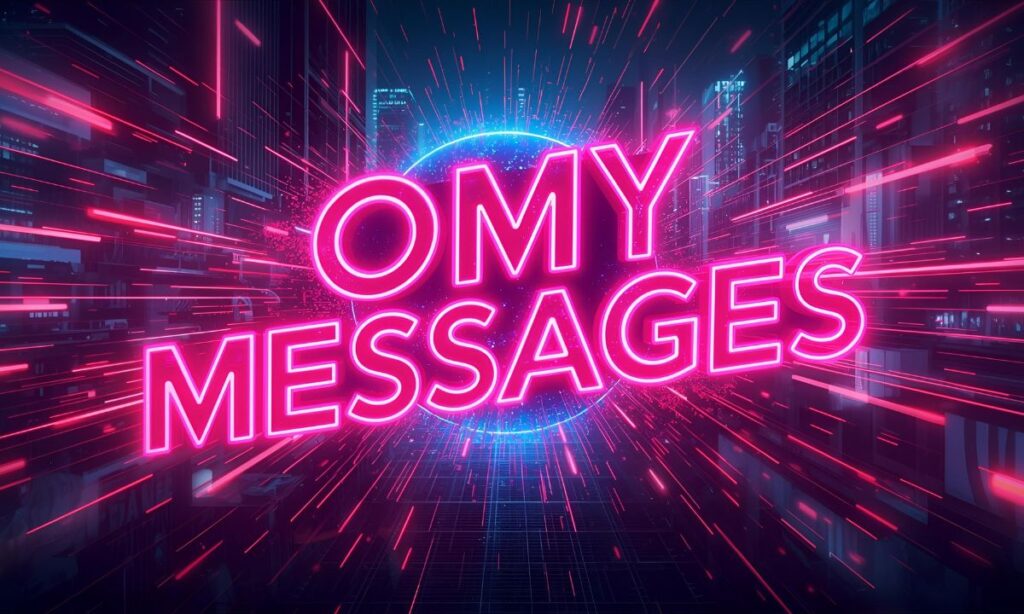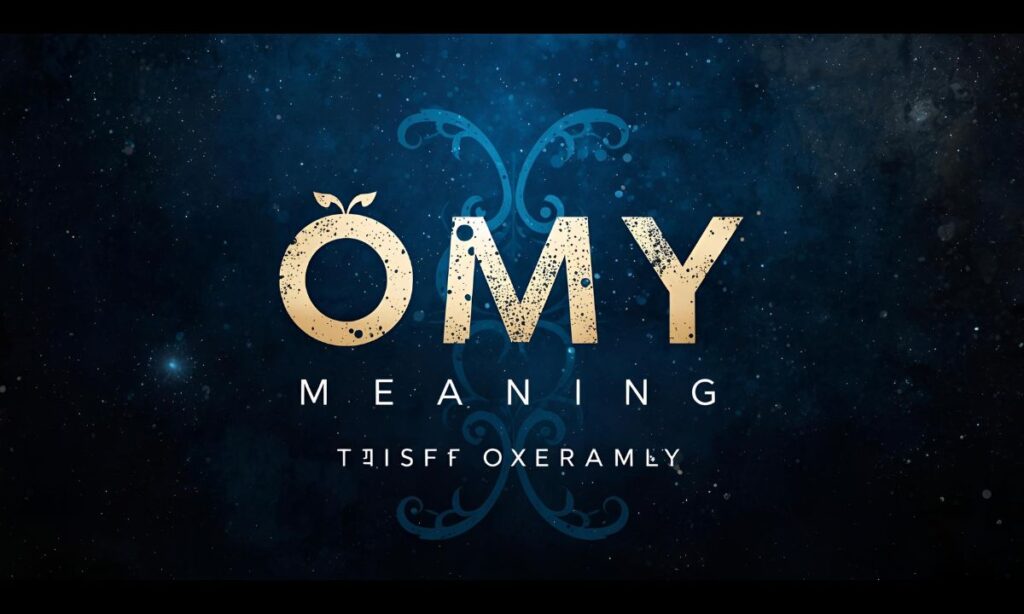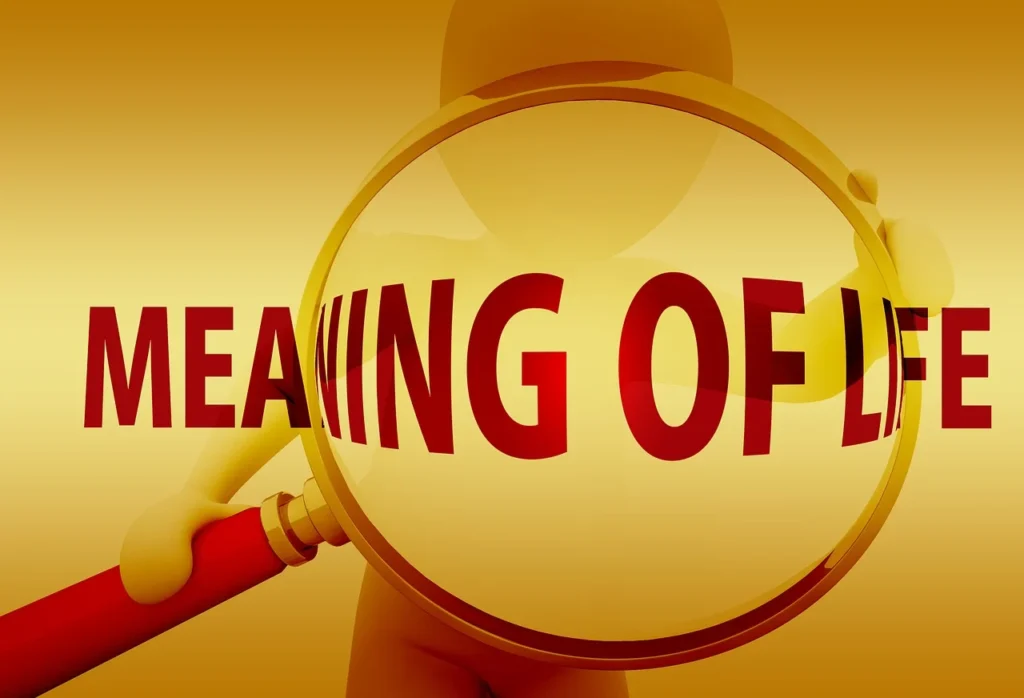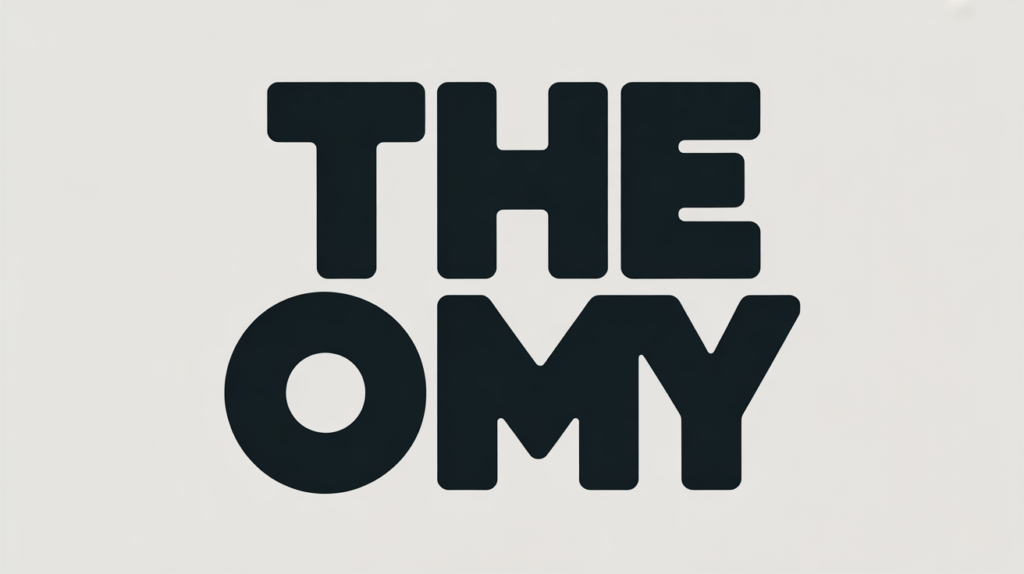In today’s digital world, short forms and abbreviations have become a major part of online communication. One such popular term is OMY Meaning, often seen in chats, texts, and social media posts. It’s a simple yet effective way to express that someone is currently on their way or heading somewhere.
Understanding the meaning of OMY helps you stay updated with modern texting trends. It not only saves time but also makes your conversations more casual and friendly. Whether used among friends or in group chats, OMY keeps messages quick and easy to understand.
What Does OMY Mean in Text Messages and Online Chat?

OMY is shorthand for On My Way. This simple abbreviation tells the recipient that you’re currently traveling to meet them or heading to a specific location. It’s a practical response when someone asks about your arrival time or when you want to confirm that you’ve started your journey.
The abbreviation serves multiple purposes in digital communication. First, it provides a quick status update without requiring lengthy explanations. Second, it reassures the other person that you haven’t forgotten about your plans. Third, it saves time when you’re literally on the move and can’t type out a full response.
When you send OMY, you’re essentially saying that you’ve left your current location and are in transit. This could mean you’re driving, walking, taking public transportation, or using any other mode of travel. The context usually makes the mode of transportation clear, so there’s no need to specify unless asked.
The Real Definition Behind OMY and “On My Way” Explained

“On My Way” is more than just a statement of movement. It carries an implicit promise of arrival and shows respect for the other person’s time. When you tell someone you’re on your way, you’re acknowledging their expectations and confirming your commitment to showing up.
The phrase has roots in everyday English, but its abbreviation emerged from the need for faster communication in the digital age. Unlike some text abbreviations that can be ambiguous, OMY has a clear and universally understood meaning within English-speaking communities. It eliminates confusion and provides a straightforward update that requires no interpretation.
Using OMY also implies a sense of urgency or immediacy. You’re not saying you’ll leave soon; you’re confirming that the journey has already begun. This distinction matters in planning and coordination, especially when timing is critical. The abbreviation respects both your time and the recipient’s by delivering essential information efficiently.
Where Did the Term OMY Originate and How Did It Spread?

The origins of OMY can be traced back to the early days of SMS texting when character limits made brevity essential. Mobile phone users in the late 1990s and early 2000s began creating abbreviations to fit more information into 160-character messages. OMY emerged alongside other travel-related acronyms as people needed quick ways to update others about their location and status.
The spread of OMY accelerated with the rise of instant messaging platforms like AOL Instant Messenger, MSN Messenger, and later, smartphone messaging apps. As texting became more prevalent, these abbreviations became part of the standard digital vocabulary. Young people, particularly teenagers and college students, adopted and popularized these shortcuts, spreading them through their social networks.
Social media platforms further amplified the use of OMY. Twitter’s character limit, Instagram’s quick-paced commenting culture, and Snapchat’s emphasis on instant communication all contributed to the abbreviation’s continued relevance. Today, OMY has transcended its original practical purpose and has become a recognized element of internet culture.
Common Ways People Use OMY in Different Messaging Platforms

On WhatsApp and iMessage, OMY typically appears as a standalone response to questions about arrival times. Someone might ask “Where are you?” and the simple reply “OMY” conveys all the necessary information. These platforms also see OMY paired with emojis like cars, running figures, or clocks to add personality and context.
Instagram and Facebook Messenger users often include OMY in more casual conversations, sometimes as part of longer messages. You might see “OMY! So excited to see you!” or “OMY, traffic is crazy though.” The abbreviation becomes part of a more expressive communication style that blends efficiency with emotion.
Snapchat users frequently send OMY as a caption on photos or videos showing their journey. A snap of the road ahead with “OMY” overlaid provides visual proof alongside the message. This multimedia approach makes the abbreviation more engaging and personal. TikTok comments sections also feature OMY, often in response to meetup plans or event coordination discussed in videos.
Professional messaging platforms like Slack or Microsoft Teams see less frequent use of OMY, but it does appear in informal team communications. Colleagues might use it when coordinating impromptu meetings or lunch plans. The context determines appropriateness; a casual “OMY to the conference room” works better than using it with senior management or clients.
OMY vs Similar Abbreviations and Understanding the Differences Between OMW, ETA, and BRB

OMY and OMW are essentially interchangeable, both meaning “On My Way.” The difference comes down to personal preference and regional usage. OMW appears slightly more common in American English, while OMY has gained traction globally. Some people choose one over the other based purely on which they learned first or which feels more natural to type.
ETA, meaning Estimated Time of Arrival,1serves a different purpose. While OMY confirms that you’ve started traveling, ETA provides specific timing information. Someone might respond “OMY, ETA 15 minutes” to give complete information. ETA answers the “when” question, while OMY answers the “are you coming” question. Using them together provides maximum clarity.
BRB, short for Be Right Back, indicates a temporary absence but doesn’t necessarily involve travel. You might use BRB when stepping away from your computer, taking a phone call, or handling a quick task. The key difference is that BRB suggests you’ll return to your current location, while OMY indicates movement to a different location. BRB is also more common in online gaming and virtual meetings where physical location changes aren’t the focus.
Other related abbreviations include OTWY (On The Way), which means the same thing but is less common, and GTG (Got To Go), which indicates departure but doesn’t specify destination. Understanding these nuances helps you choose the right abbreviation for each situation and interpret messages correctly.
When You Should and Shouldn’t Use OMY in Professional Communication

Professional settings require careful consideration of communication style. OMY can be appropriate with colleagues you know well, especially in industries with casual workplace cultures like tech startups, creative agencies, or small businesses. When coordinating quick meetings or lunch plans with coworkers at your level, OMY strikes a friendly, efficient tone.
However, avoid using OMY with clients, senior executives, or in formal business correspondence. An email to a client should read “I’m on my way to our meeting” rather than just “OMY.” The same applies to text messages with supervisors or important stakeholders. Taking the extra seconds to write complete sentences shows professionalism and respect.
Job interviews and initial client meetings absolutely require full sentences. Never respond to “Are you here yet?” with just “OMY” when meeting someone for the first time professionally. Instead, write something like “Yes, I’m on my way and should arrive in about five minutes. Thank you for your patience.” This demonstrates communication skills and attention to detail.
Internal team chats and project management tools offer more flexibility. If your workplace culture embraces casual communication and everyone uses abbreviations, OMY fits naturally. Pay attention to how leadership and colleagues communicate; mirror their style to ensure your messages land appropriately. When in doubt, err on the side of formality.
Regional Variations and Alternative Meanings of OMY Around the World

While “On My Way” is the dominant meaning of OMY in English-speaking countries, regional variations exist. In some communities, particularly in the United Kingdom and Australia, people more commonly use OMW, making OMY less immediately recognizable. However, global internet culture has standardized many abbreviations, so most English speakers understand OMY regardless of location.
In certain contexts, OMY can stand for “Oh My Years,” an expression of surprise or disbelief, though this usage is extremely rare and largely regional to specific online communities. Some religious communities use OMY as “Oh My Yahweh,” similar to OMG but with a different religious reference. These alternative meanings are so uncommon that they rarely cause confusion.
Non-English-speaking countries have their own abbreviations for “on my way.” Spanish speakers might use “YV” (ya voy), French speakers use “J’arrive” without abbreviation or “JA” informally, and German speakers might type “BU” (bin unterwegs). Understanding these variations matters if you communicate internationally or in multilingual contexts.
Cultural attitudes toward abbreviations also vary. Some cultures view text speak as disrespectful or too casual, preferring complete sentences even in informal messaging. Others embrace abbreviations enthusiastically. Being aware of these cultural differences prevents misunderstandings and shows cultural sensitivity, especially in international business or cross-cultural friendships.
How Gen Z and Millennials Use OMY Differently in Their Digital Conversations

Millennials, who grew up during the rise of texting, tend to use OMY functionally and straightforwardly. They typically send it as a standalone message or with minimal additions like OMY or OMY, see you soon. Having developed their texting habits during the character-limit era, millennials appreciate the efficiency that abbreviations provide.
Gen Z approaches OMY with more creativity and irony. They might use it sarcastically when they’re actually not leaving yet, pair it with exaggerated emojis, or incorporate it into memes. A Gen Z user might respond “OMY” to something that has nothing to do with travel, using it humorously. This playful approach reflects Gen Z’s tendency to bend language rules for comedic effect.
Gen Z also shows less commitment to traditional abbreviation meanings. They’re more likely to create new abbreviations or repurpose existing ones, so OMY might appear in unexpected contexts. However, when used literally for “on my way,” both generations understand and use it similarly. The difference lies more in surrounding context and tone than in core meaning.
Younger members of Gen Z, who have grown up with autocorrect and unlimited texting, sometimes skip abbreviations entirely, preferring to type full words. For them, OMY might feel outdated compared to simply typing on my way, which takes only seconds on modern smartphones. This generational shift suggests that abbreviation usage evolves constantly based on available technology.
OMY in Social Media and Instagram, TikTok, and Snapchat Usage Examples

Instagram users frequently include OMY in direct messages when making plans. You might see conversations like. Coffee at 3?” followed by yes! OMY now when someone is running late. Instagram Stories also feature OMY, often as text overlay on photos of car dashboards, subway platforms, or walking paths, giving followers real-time updates on their location.
TikTok comments sections show OMY in response to creators announcing meetups or events. Fans comment OMY to express enthusiasm, even if they’re not literally traveling anywhere. This figurative use demonstrates how the abbreviation has expanded beyond its literal meaning to express excitement and commitment. Creators also use OMY in video captions when documenting their travels or daily routines.
Snapchat’s ephemeral nature makes OMY particularly popular. Users send quick snaps with OMY as a caption instead of typing longer messages. The combination of photo evidence and brief text provides efficient communication that matches Snapchat’s quick-paced style. Snap Maps also integrate with OMY messages, letting friends see your location while you travel.
Twitter users employ OMY less frequently since the platform focuses more on public broadcasting than personal coordination. However, it appears in direct messages and replies when users coordinate meetups at events, conferences, or conventions. The public nature of Twitter makes private coordination abbreviations less visible, but they’re still used behind the scenes.
Business Texting Etiquette and Is OMY Appropriate for Work Messages?

Business texting has become increasingly common, but etiquette standards remain important. OMY can be appropriate for internal team communications, especially in fast-paced environments where quick coordination matters. If you’re meeting colleagues for a working lunch or heading to a conference room, OMY provides sufficient information without seeming overly formal.
Client communications require more careful judgment. Established relationships with clients who communicate casually might accept OMY, but new client relationships demand more formal language. Consider your client’s communication style; if they use abbreviations, you can mirror that approach. If they consistently write complete sentences, follow their lead.
Time-sensitive situations can justify using OMY even in more formal contexts. If you’re running late to an important meeting and need to send a quick update while navigating traffic, OMY, arriving in 5 minutes is better than not communicating at all. The urgency of the situation provides context that excuses the abbreviation.
Industry culture matters significantly. Creative industries, tech companies, and startups typically embrace casual communication including abbreviations. Traditional industries like law, finance, and healthcare often expect more formal business communication. Assess your specific workplace culture before deciding whether OMY fits your professional messaging.
Common Mistakes People Make When Using OMY and How to Avoid Them

The most common mistake is sending OMY when you haven’t actually left yet. This creates false expectations and can damage trust. If you’re planning to leave in five minutes, it’s better to say Leaving in 5 rather than OMY. Accuracy matters because the other person might time their own actions based on your message.
Another error is using OMY without considering whether the recipient knows where you’re going. If you haven’t previously confirmed plans or your destination is unclear, OMY alone doesn’t provide enough information. Add context like “OMY to the restaurant” or OMY to your place to avoid confusion.
Some people overuse OMY, sending it multiple times during the same journey. One “OMY” message is usually sufficient. Sending updates like “OMY” followed by “Still on my way” five minutes later feels redundant. If there’s a significant delay or change in plans, provide a specific update instead of repeating the same abbreviation.
Misreading the formality of the situation causes problems too. Sending OMY to someone who expects professional communication can seem disrespectful or careless. Always consider your relationship with the recipient and the context of your meeting before choosing to use abbreviations.
The Evolution of Text Speak and How OMY Fits into Digital Language Trends

Text speak emerged from practical limitations, specifically the 160-character SMS limit and the tedious process of typing on numeric keypads. Early mobile phone users created abbreviations out of necessity, establishing a foundation that would influence digital communication for decades. OMY represents this era perfectly, offering a useful shortcut that saved precious characters and time.
As smartphones with full keyboards became standard, the practical need for abbreviations diminished, but the cultural habit persisted. Text speak evolved from pure efficiency into a style choice and social signal. Using abbreviations like OMY became a marker of digital fluency and casual friendliness rather than just a time-saver.
Modern trends show interesting contradictions. Autocorrect and predictive text make typing full words easier, potentially reducing abbreviation necessity. However, the fast pace of digital conversation and the influence of platform character limits (like Twitter’s original 140 characters) keep abbreviations relevant. OMY has survived because it remains genuinely useful for quick coordination.
Younger users increasingly blend different communication styles, mixing abbreviations with full sentences, emojis, and even voice messages. OMY might appear in the same conversation as lengthy voice notes and carefully crafted messages. This hybrid approach suggests that abbreviations will remain part of digital language, but in more selective, context-appropriate ways.
Quick Response Guide and What to Text Back When Someone Sends You OMY

When someone texts you OMY, a simple acknowledgment usually suffices. Responses like Great, see you soon or Perfect confirm you received their message without requiring lengthy conversation. If you’re waiting at the meeting location, you might add “I’m already here” to help them find you.
If you need timing information, follow up with questions about their ETA. OMY tells you they’re traveling but not when they’ll arrive.
Asking How far away are you?
About how long?
gets you the specific information you need without seeming impatient. Most people appreciate the opportunity to provide more details.
Sometimes “OMY” requires action on your end. If you’re also supposed to be heading to the same location, respond with your own status: OMY tool or I’m leaving now as well. This coordination prevents one person from arriving significantly earlier and waiting unnecessarily.
If plans have changed and you’re no longer able to meet, respond quickly and clearly. Don’t just ignore their OMY message. Reply with something like Actually, something came up. Can we reschedule? Prompt communication shows respect for their time and prevents them from making an unnecessary trip.
OMY Alternatives and Other Ways to Say “On My Way” in Different Situations

OMW serves as the most direct alternative to OMY, meaning exactly the same thing. Choose between them based on personal preference or which feels more natural to type. Some people find OMW slightly easier on phone keyboards because the letters are spread across the keyboard rather than clustered together.
For more specificity, consider Leaving now or Just left, which provide timeline context that plain OMY doesn’t. These phrases tell the recipient not just that you’re traveling, but exactly when you started, helping them calculate your arrival time more accurately. When precision matters, these alternatives work better than generic abbreviations.
En route adds a slightly more formal tone while remaining concise. It works well for professional contexts where you want to be brief without seeming too casual. Similarly, Headed your way or Headed there now provide friendly alternatives that sound less abbreviated while staying concise.
When you want to provide more information, combine your status with expected timing: On my way, there in 10 or Leaving now, should arrive by 3. This comprehensive approach eliminates the need for follow-up questions and shows consideration for the other person’s planning needs. Voice messages also work well when you’re hands-free and want to provide detailed updates.
Cultural Context Matters and Understanding OMY Across Different Age Groups and Demographics

Older generations, particularly Baby Boomers and older Gen X members, might not immediately recognize OMY. They’re more likely to understand full phrases or more established abbreviations. When communicating across generational lines, consider whether your recipient will understand the abbreviation or whether spelling it out shows more respect.
Educational background influences abbreviation usage too. People who frequently write professionally often prefer complete sentences even in casual contexts, viewing abbreviations as too informal. Others who work in fast-paced, communication-heavy environments embrace efficiency tools like OMY. Neither approach is wrong; they simply reflect different professional experiences and values.
Urban versus rural differences also exist. People in cities with robust public transportation might use OMY more frequently since coordinating meetups and managing transit times requires constant communication. Rural areas where driving distances are longer and meetings might be less frequent could see less adoption of these specific coordination abbreviations.
Socioeconomic factors play a subtle role. Unlimited texting plans and smartphone access have become nearly universal in developed countries, but this wasn’t always true. The generation that texted during the pay-per-message era developed stronger abbreviation habits. Understanding these background factors helps interpret communication styles without making assumptions.
Future of Text Abbreviations and Will OMY Remain Relevant in Digital Communication?

Voice technology and speech-to-text features could reduce abbreviation usage as speaking becomes easier than typing. If most people send voice messages or dictate texts, the efficiency advantage of OMY disappears. However, silent communication situations meetings, libraries, public transportation—will always require text-based options, keeping some abbreviations relevant.
Artificial intelligence and predictive text continue improving, potentially suggesting full phrases as quickly as users can type abbreviations. If typing “on my way” becomes as fast as typing OMY, the abbreviation might fade from necessity into stylistic choice. Some users will keep abbreviations for their informal, friendly tone rather than pure efficiency.
Platform-specific features might replace text abbreviations. Location sharing, real-time tracking, and automated status updates could make manual OMY messages unnecessary. If your messaging app automatically shows you’re in transit, explicitly stating it becomes redundant. These technological solutions might eventually make coordination abbreviations obsolete.
However, language evolution suggests OMY will adapt rather than disappear. Abbreviations have survived multiple technological shifts because they serve social and emotional functions beyond mere efficiency. OMY signals casualness, familiarity, and digital fluency. Even if it’s not strictly necessary, people might continue using it to maintain these social meanings and connections to digital culture.
Frequently Asked Questions
What does OMY mean in chat?
OMY means On My Way, a quick way to tell someone you’re heading toward them.
How is OMY used in text messages?
People use OMY to let others know they’re coming or almost there.
Is OMY a slang term?
Yes, OMY is popular internet slang meaning On My Way.
When should I use OMY in conversation?
Use OMY when you’re leaving or traveling to meet someone.
What’s the difference between OMY and OMW?
Both mean On My Way, but OMW is more common while OMY is shorter.
Where did the term OMY come from?
OMY came from texting culture as a fast way to express travel updates.
Can OMY be used in professional messages?
It’s better to avoid OMY in formal chats and use On my way instead.
Do people use OMY on social media?
Yes, users post OMY to show they’re heading somewhere or joining events.
Is OMY used worldwide or only in certain regions?
OMY is widely used online, especially among younger English speakers.
What are other similar abbreviations to OMY?
Similar terms include BRB (Be Right Back) and TTYL (Talk To You Later).
Conclusion
In conclusion, OMY means ,On My Way, a quick and modern expression widely used in chats and text messages. It helps people share their movement or arrival updates instantly. This abbreviation shows how communication has become faster and more convenient in the digital world.
Overall, OMY adds a friendly and efficient touch to online conversations. It keeps messages short while still expressing clear intent. Using OMY makes texting smoother and perfectly fits today’s fast-paced communication style.

